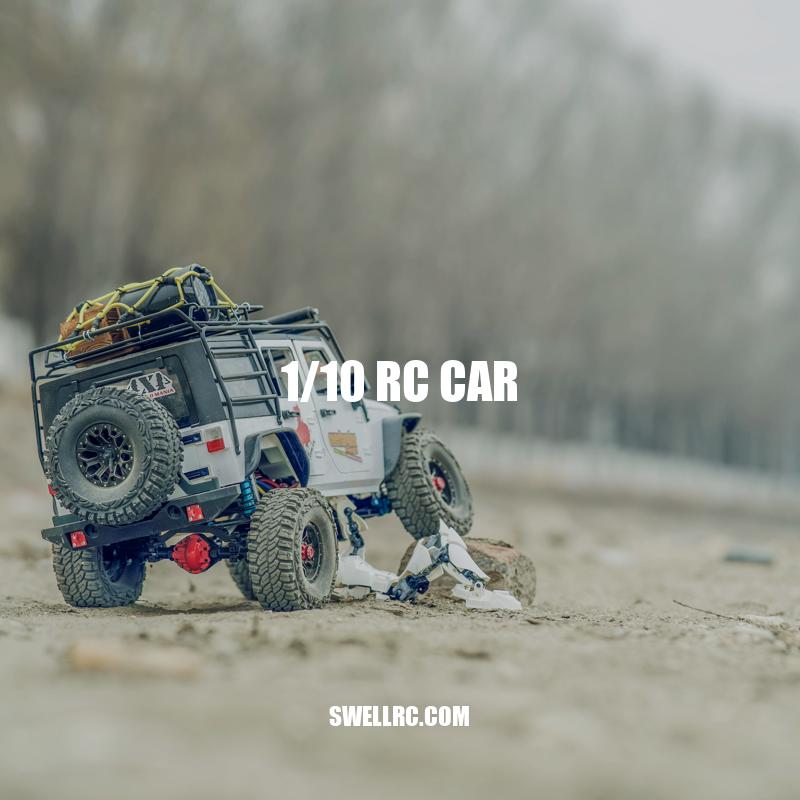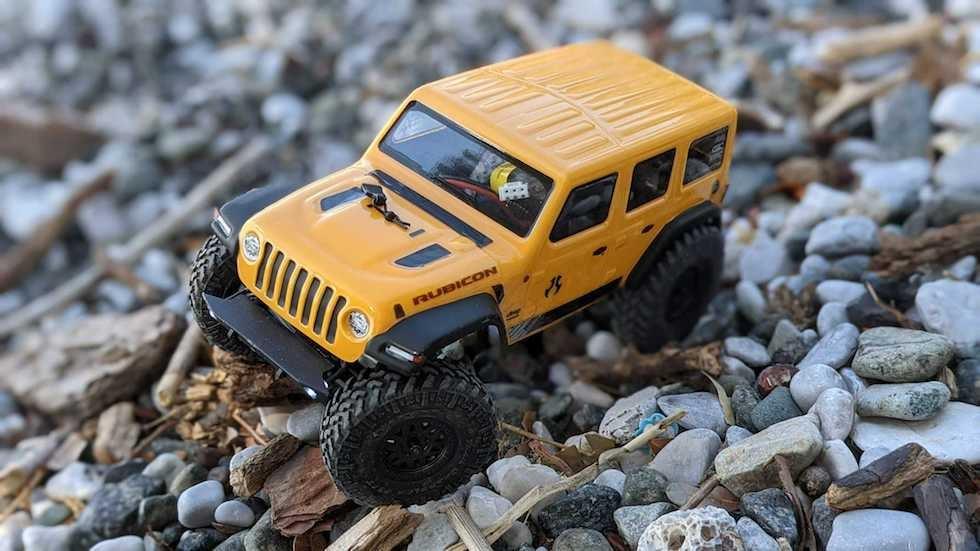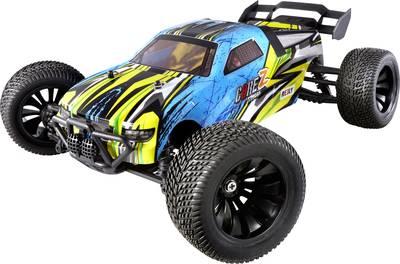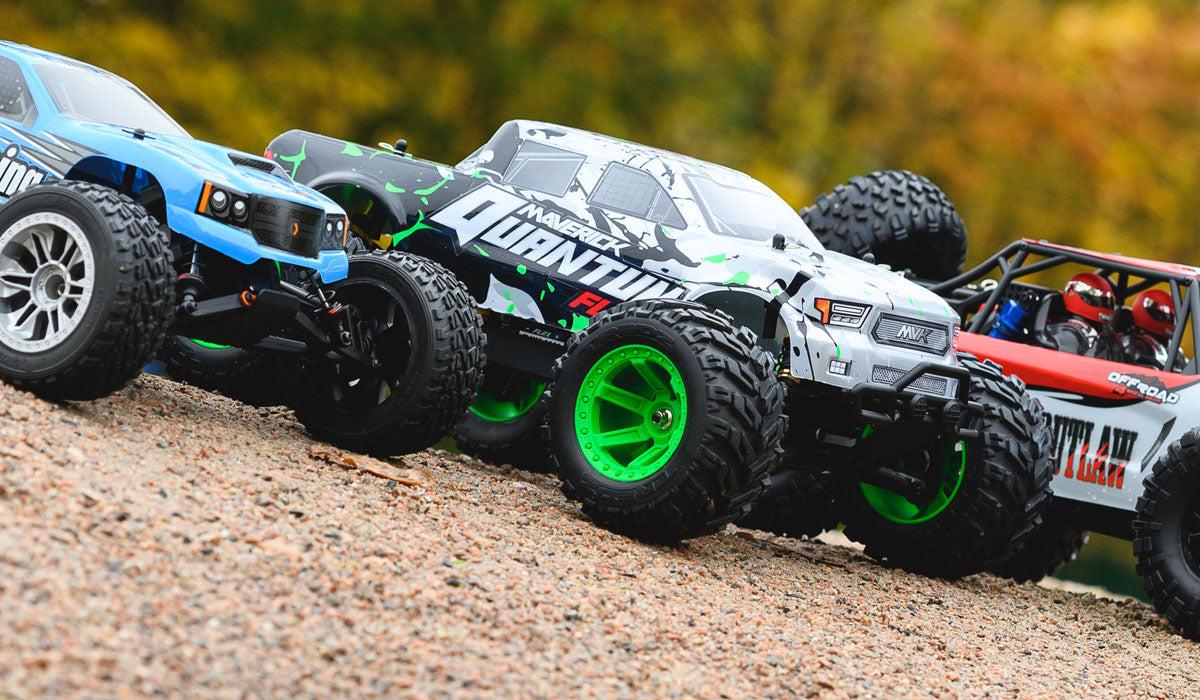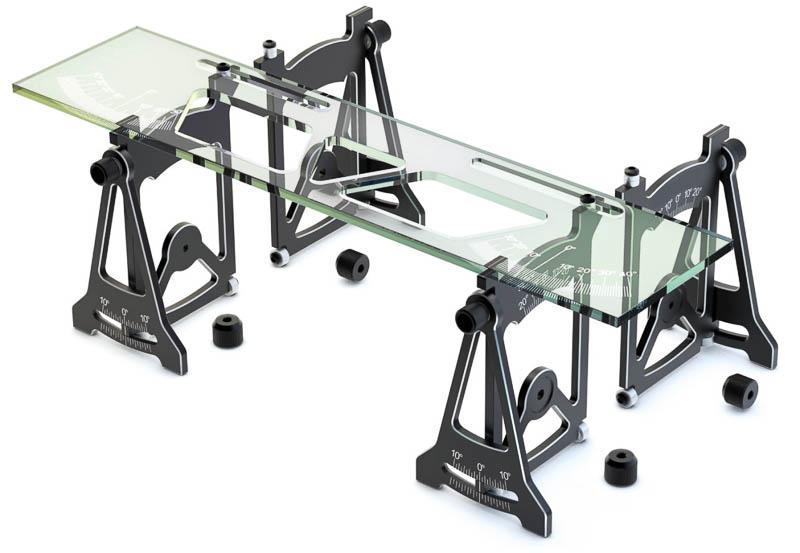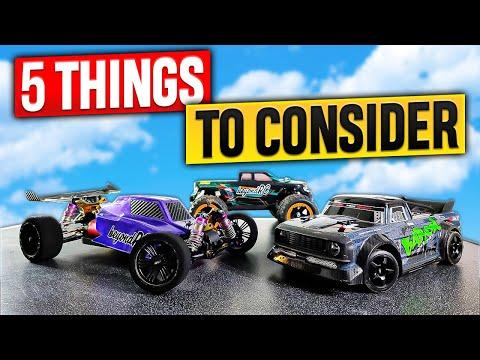Ultimate Guide to 1/10 RC Cars: Types, Components, and Maintenance Tips
Remote-controlled cars have come a long way since their introduction in the 1960s. Today, there are various types, sizes and shapes of these miniature vehicles that cater to a wide range of enthusiasts. One of the most popular sizes is the 1/10 scale rc car, which offers a balance between size, performance, and affordability. These rc cars are well-loved by beginners and experienced hobbyists alike, as they allow for various modification and customization options. In this article, we will explore the world of 1/10 rc cars, their features, components, types, and more to help you choose the best rc car for your needs.
1/10 Scale: Understanding the size and dimensions of your RC car.
When dealing with 1/10 scale rc cars, it’s essential to understand what the scale size means and the dimensions of the rc car. The 1/10 scale is quite popular, but there are other scales to choose from depending on your needs. 1/10 scale rc cars are not too big and not too small, which makes them perfect for both indoor and outdoor racing.
Other popular scales include 1/8, 1/12, and 1/16, each with their respective size dimensions. However, 1/10 scale is a sweet spot for many hobbyists as it’s large enough to be noticed while driving but still small enough to fit indoors or in smaller outdoor spaces.
The dimensions of a typical 1/10 scale rc car are approximately 14-16 inches long, 6-7 inches wide, and 4-5 inches tall. Knowing these measurements will help you determine the size of the vehicle and whether or not it will fit in your desired location.
There are many different brands and models of 1/10 scale rc cars available on the market. Some popular brands include Traxxas, HPI Racing, and ECX. Each brand offers various features, designs and prices, so it’s best to research and compare them before making a purchase.
Overall, 1/10 scale rc cars are a popular choice for hobbyists and enthusiasts alike. With their manageable size, versatility and range of options available, it’s easy to see why they are such a hit amongst the remote control car community.
What are the dimensions of a typical 1/10 scale rc car?
The dimensions of a typical 1/10 scale rc car are approximately 15-20 inches in length, 7-8 inches in width, and 5-6 inches in height.
The Essential Components and Features of 1/10 RC Cars.
When it comes to components and features, 1/10 rc cars have several essential parts that determine their performance. The chassis is the primary structure that holds all the other components in place. Most 1/10 rc cars have a tub or pan chassis made of lightweight materials like plastic or carbon fiber. The suspension comprises of shocks and springs, which absorb the terrain’s impact and provide stability to the rc car while driving.
The motor is typically a brushed or brushless electric motor, which provides power to turn the wheels. The electronic components include a speed controller, radio receiver, battery, and steering servo, which help control the car’s speed, direction, and power supply.
The table below displays some of the popular 1/10 rc cars in the market, their specifications and features.
| Brand & Model | Motor Power | Top Speed | Chassis Type | Suspension Type |
|---|---|---|---|---|
| Traxxas Slash 2WD | Titan 12-Turn 550 | 30+ mph | Tub | Oil-filled |
| Redcat Racing Everest Gen7 | Brushed Radient Reaktor | 15+ mph | Aluminum | Aluminum Capped Oil-filled |
| Team Associated RC10B6.1D | Reedy Sonic 540-M3 | 30+ mph | Tub | V2 12mm Big Bore |
| Losi Tenacity SCT | Dynamite Fuze 130A | 50+ mph | Custom | Aluminum Threaded Body |
Understanding the various components and features of a 1/10 rc car and how they affect its performance is crucial in choosing the right one that suits your needs.
What are the essential components of a 1/10 rc car?
Some essential components of a 1/10 rc car are the chassis, motor, battery, transmitter, receiver, electronic speed controller (ESC), steering servo, suspension system, wheels, and tires.
Types of 1/10 RC Cars and Their Unique Features
There are different types of 1/10 rc cars designed to suit different driving styles and terrains. On-road, off-road, drift, and crawler rc cars each have specific features and capabilities that make them unique.
For example, on-road rc cars have lower ground clearance, wider tires, and less suspension travel than off-road rc cars to allow for better cornering and speed on smooth surfaces. Off-road rc cars have higher ground clearance, larger, knobby tires, and longer suspension travel to absorb rough terrain’s bumps and dips. Drift rc cars have slick tires, a more flexible suspension setup, and differentials that allow for easy sliding around corners. Crawler rc cars have very low gear ratios, high-torque motors, and a 4-wheel drive system to provide maximum traction and maneuverability over obstacles.
Overall, each type of 1/10 rc car has its strengths and weaknesses, and it is essential to choose the right type of rc car for the driving environment and style. With so many brands and models available, enthusiasts can find the perfect 1/10 rc car to suit their preferences and skill level.
Some well-known 1/10 rc car brands that produce these types of vehicles are Traxxas, ARRMA, Tamiya, HPI Racing, Axial, and Losi.
What are the strengths and weaknesses of different types of 1/10 RC cars?
There are various types of 1/10 RC cars with different strengths and weaknesses. For example, touring cars are known for their speed and stable handling but may struggle on rough terrain. Short course trucks have good suspension and can handle jumps well but are not as fast on paved surfaces. Buggies are versatile and can handle different terrains but may lack stability at high speeds. On-road drift cars excel in cornering and drifting but have limited use outside of smooth surfaces. Rock crawlers have great off-road capabilities but are slow and may not be suitable for racing. Overall, it depends on the intended use and personal preference when choosing a 1/10 RC car.
Essential Accessories and Tools for 1/10 RC Cars
Proper maintenance and care are crucial to maintaining the performance and longevity of 1/10 rc cars. Here are some of the essential accessories and tools for maintaining and repairing 1/10 rc cars:
– Basic tools like screwdrivers and pliers are needed to assemble and disassemble various parts of the rc car.
– Specialized tools like shock pliers, ball link pliers, and hex tools are also useful for maintaining and tuning specific parts.
– RC lubricants like silicone grease, bearing oil, and shock oil help keep the moving parts of the rc car running smoothly.
– Battery chargers, battery voltage testers, and battery storage bags are essential for managing and maintaining the batteries.
– There are many websites that offer a wide selection of accessories and tools for 1/10 rc cars, making it easy for enthusiasts to find what they need.
By regularly maintaining and repairing their 1/10 rc cars, enthusiasts can maximize their fun and enjoyment of remote-controlled vehicles for years to come. Some popular websites to buy 1/10 rc car accessories are RC Planet, Tower Hobbies, and Amain Hobbies.
What are some popular websites to buy 1/10 rc car accessories?
Some popular websites to buy 1/10 rc car accessories are HobbyTown, AMain Hobbies, Tower Hobbies, and Amazon.
Choosing the Perfect 1/10 RC Car: Factors to Consider
When choosing a 1/10 rc car, there are several factors to consider to make sure you find the perfect rc car for your needs:
– Consider your skill level when choosing a 1/10 rc car. Beginners may want to start with a ready-to-run (RTR) model, while more advanced users might prefer a kit.
– Different types of rc cars are better suited for different terrains and purposes. On-road cars are great for racing on smooth surfaces, while off-road cars can handle rougher terrain. Drift cars are designed for sliding and drifting, while crawler cars can tackle steep inclines and rough obstacles.
– Consider the motor type and power of the rc car. Brushed motors are cheaper and slower, while brushless motors are more expensive and faster. The power of the motor is measured in turns; lower turn motors are faster but less efficient.
– Battery life and capacity are important factors to consider. Higher capacity batteries will give you longer run times, but also require more charging time and higher costs.
– Durability and quality of materials should also be considered. Higher quality materials like aluminum and carbon fiber will be more durable and withstand crashes and impacts better.
– Review sites and forums like RC Car Action and RCCrawler.com offer valuable insights and reviews from other enthusiasts that can help inform your buying decision.
By carefully considering these factors, you can find the 1/10 rc car that will give you the best performance, durability, and enjoyment.
What are the different types of rc cars and what terrains are they best suited for?
The different types of RC cars include on-road cars, off-road cars, buggy cars, and truck cars. On-road cars are best suited for smooth and flat surfaces like roads and tracks. Off-road cars are designed for uneven terrains like gravel, dirt, and sand. Buggy cars are a mix of both on-road and off-road and can handle moderate rough terrains. Truck cars are best suited for off-road terrains such as rocks, mud, and steep inclines.
Conclusion
In conclusion, 1/10 rc cars offer hobbyists and enthusiasts an exciting and engaging remote control vehicle experience. From their scale and dimensions to their components and features, 1/10 rc cars have evolved to become more sophisticated and advanced, offering users a range of options for customization and modification. With different types and variations, enthusiasts can choose the perfect car for their intended use, whether it’s racing on smooth surfaces, navigating rough terrain, or drifting around corners. By choosing the right motor type, battery life, and durability, enthusiasts can ensure they get the maximum performance and enjoyment out of their 1/10 rc car.
Furthermore, with the advent of online review sites and forums, enthusiasts can easily research and review different 1/10 rc cars to compare features, performance, and price points. This makes the buying process much more accessible and informed, helping enthusiasts to make the right choice for their skill level and budget. With so many options available, it’s no wonder that 1/10 rc cars remain a popular and engaging hobby for remote control vehicle enthusiasts.
In conclusion, 1/10 rc cars offer an exciting and satisfying experience for enthusiasts and hobbyists alike. With their high-quality engineering and design, hobbyists can be sure they are investing in a valuable and entertaining remote control car that they will enjoy for years to come.

